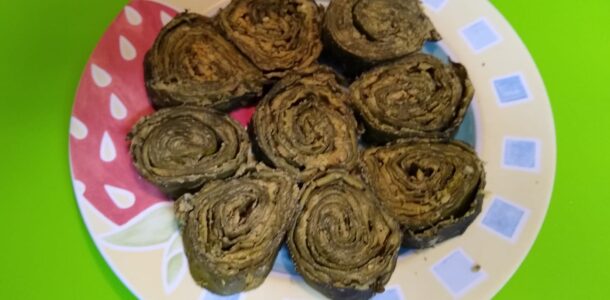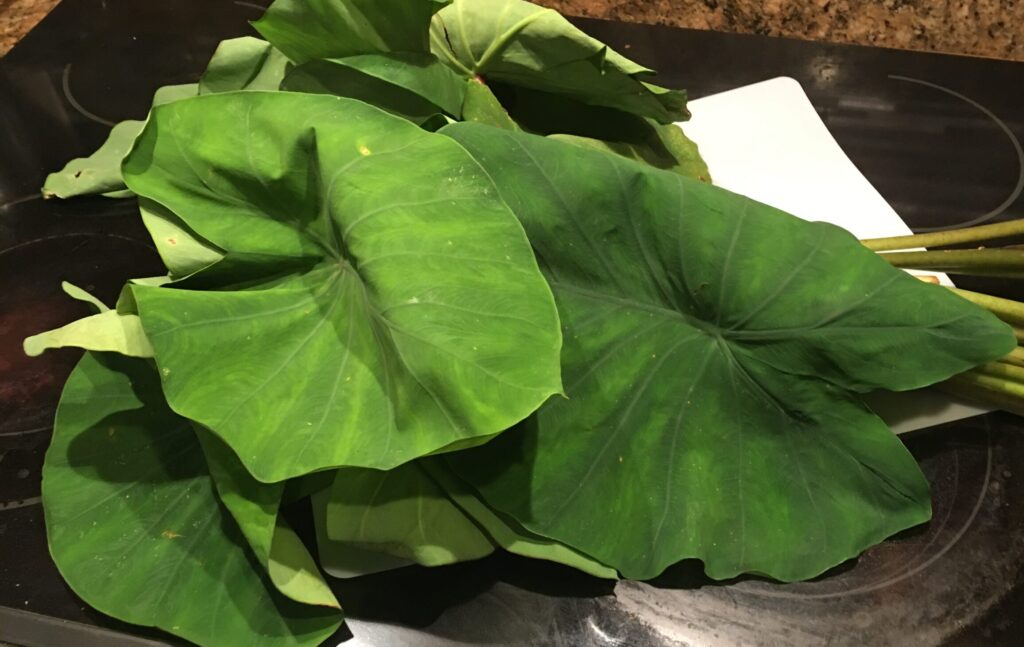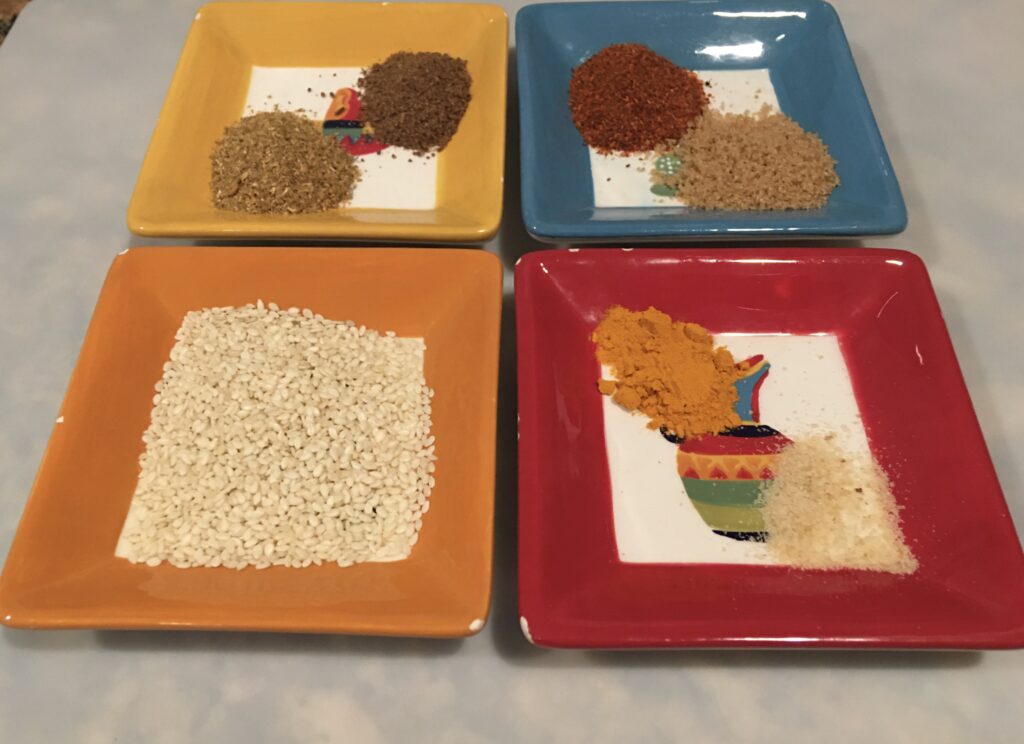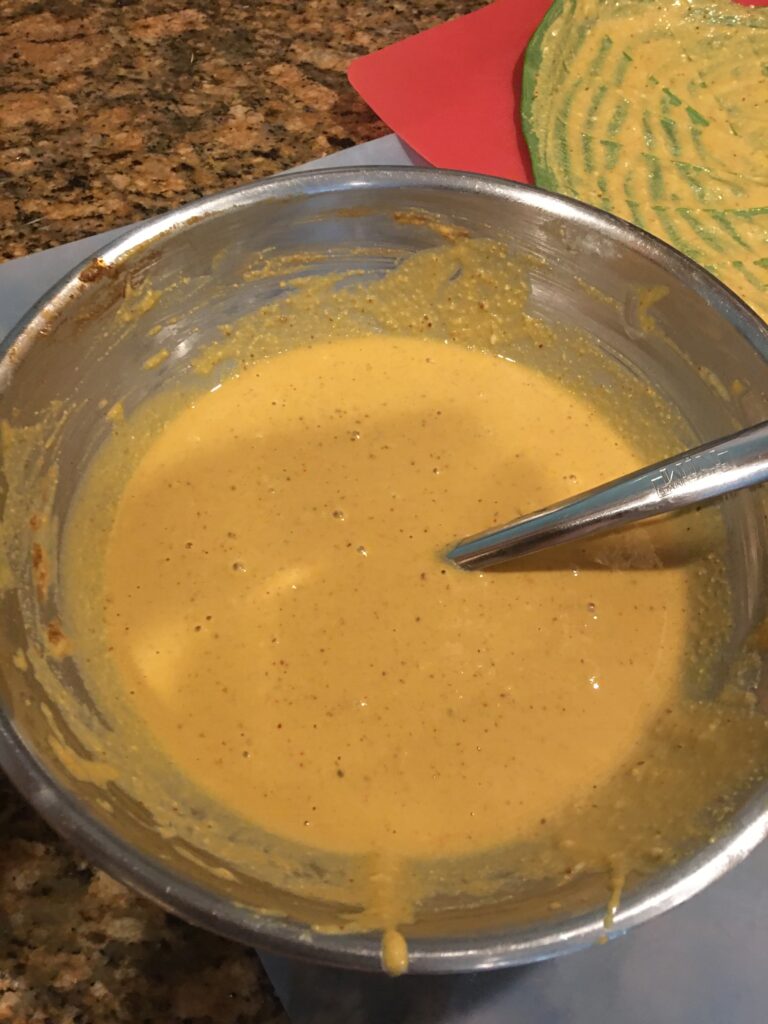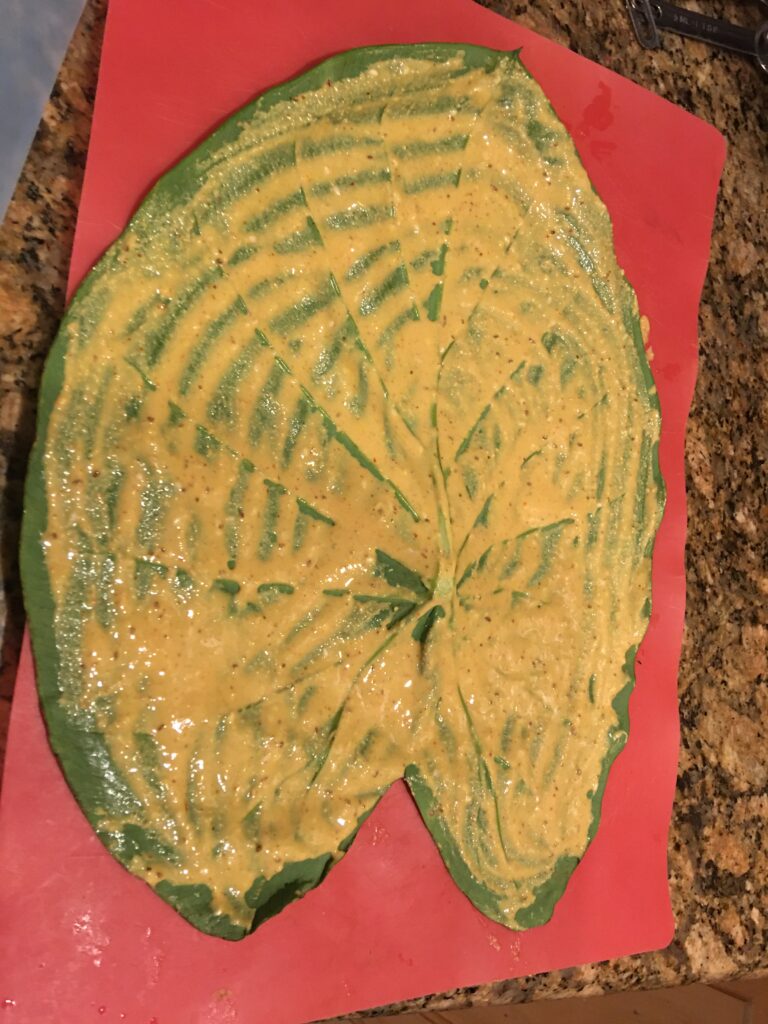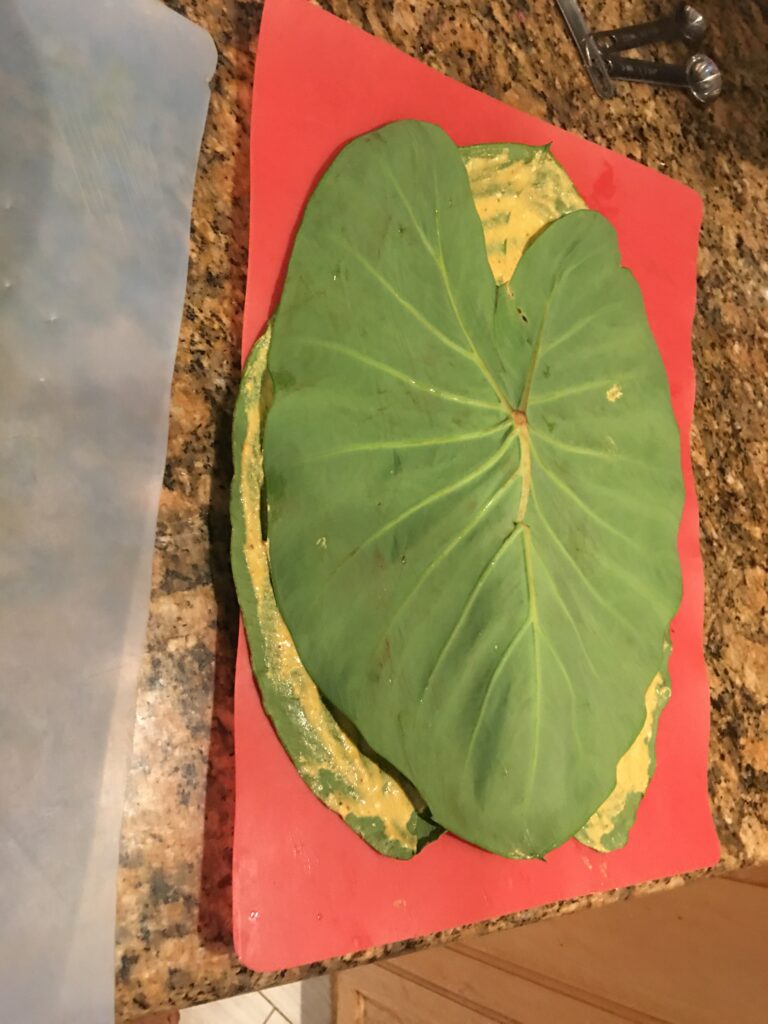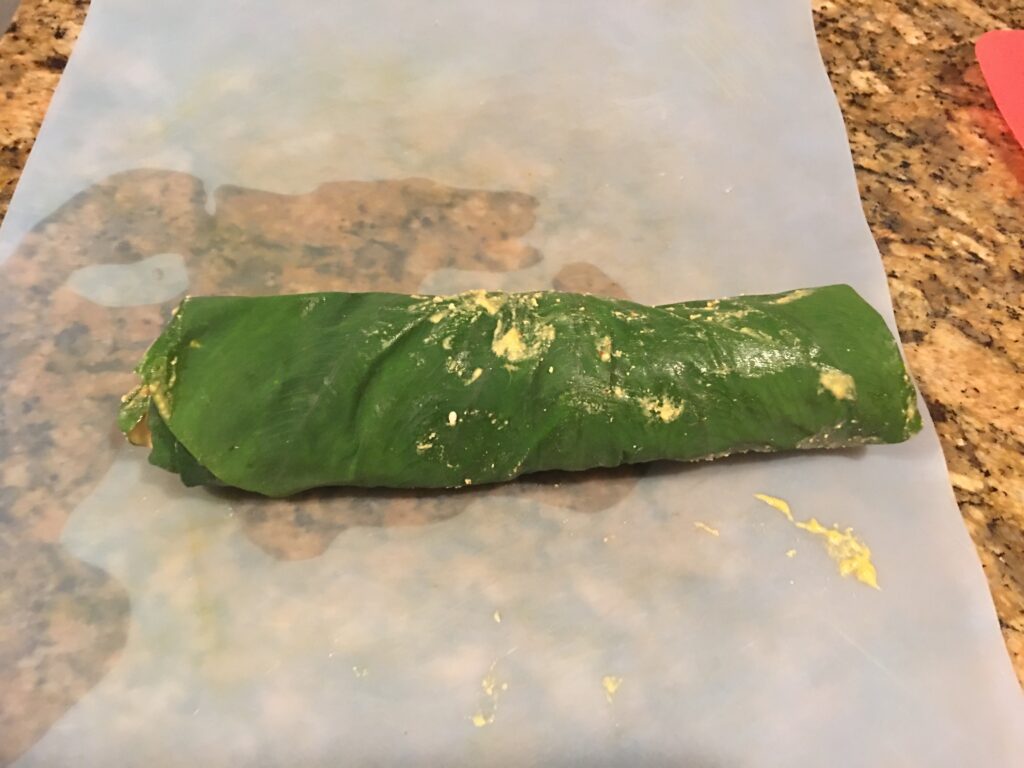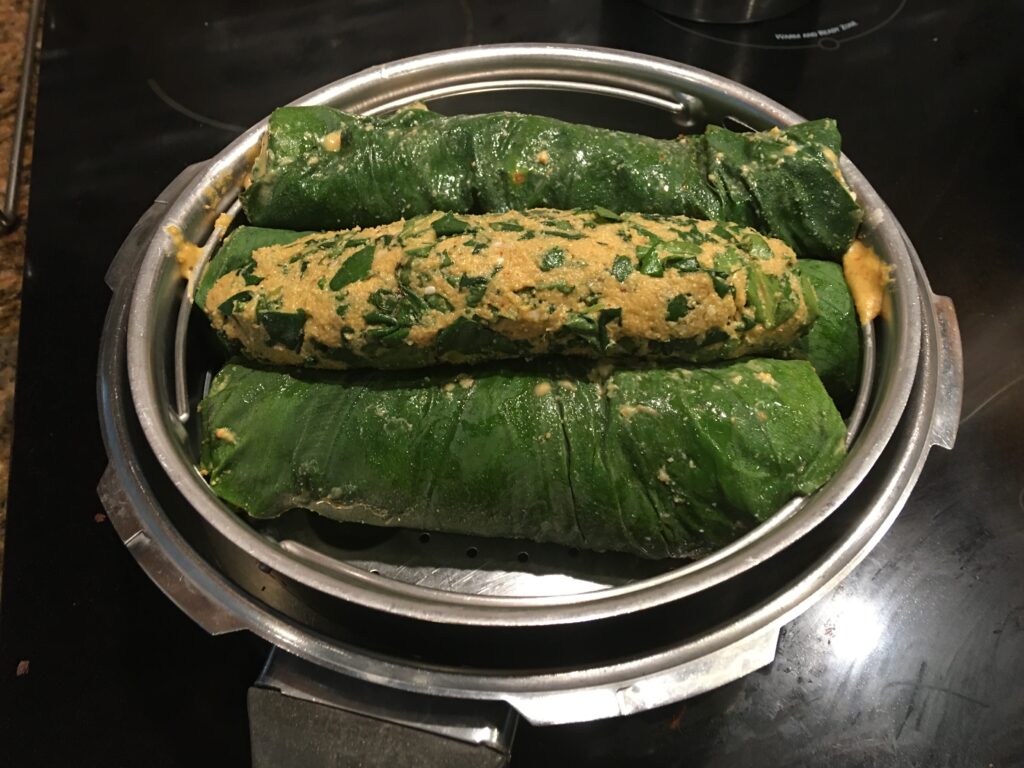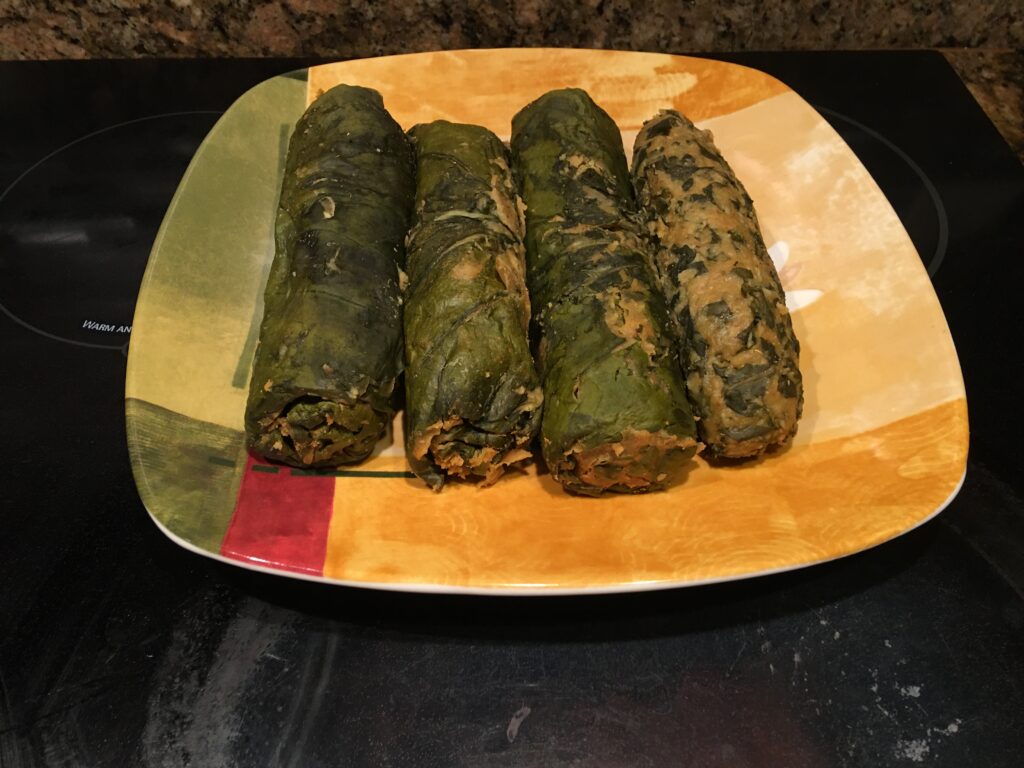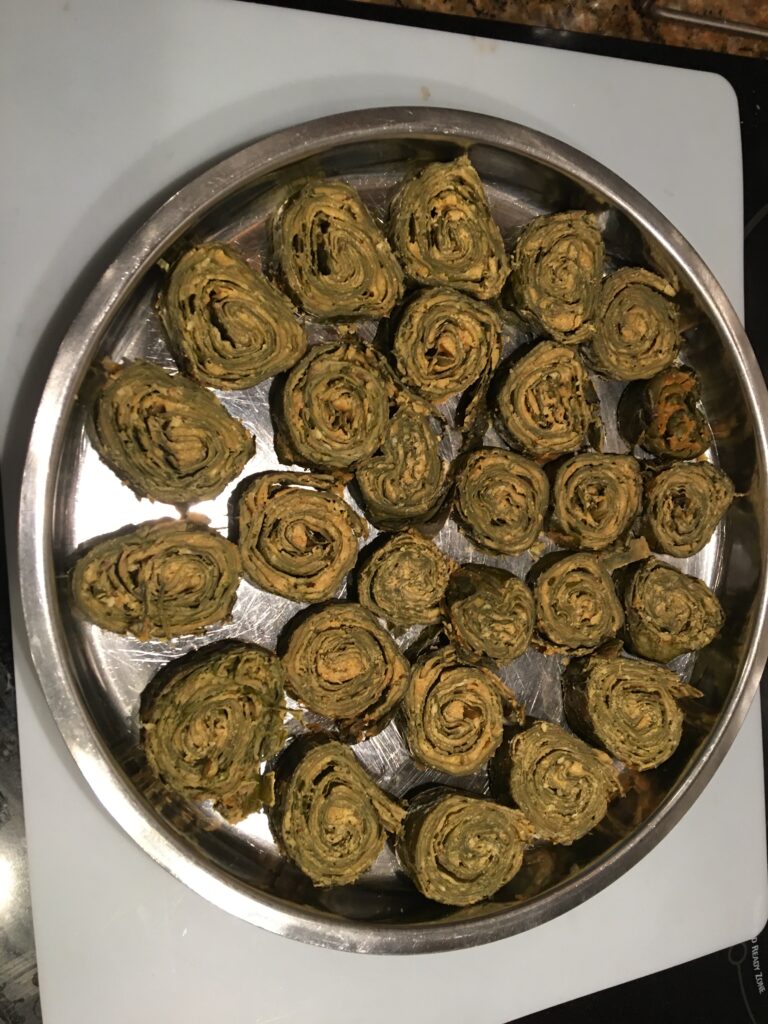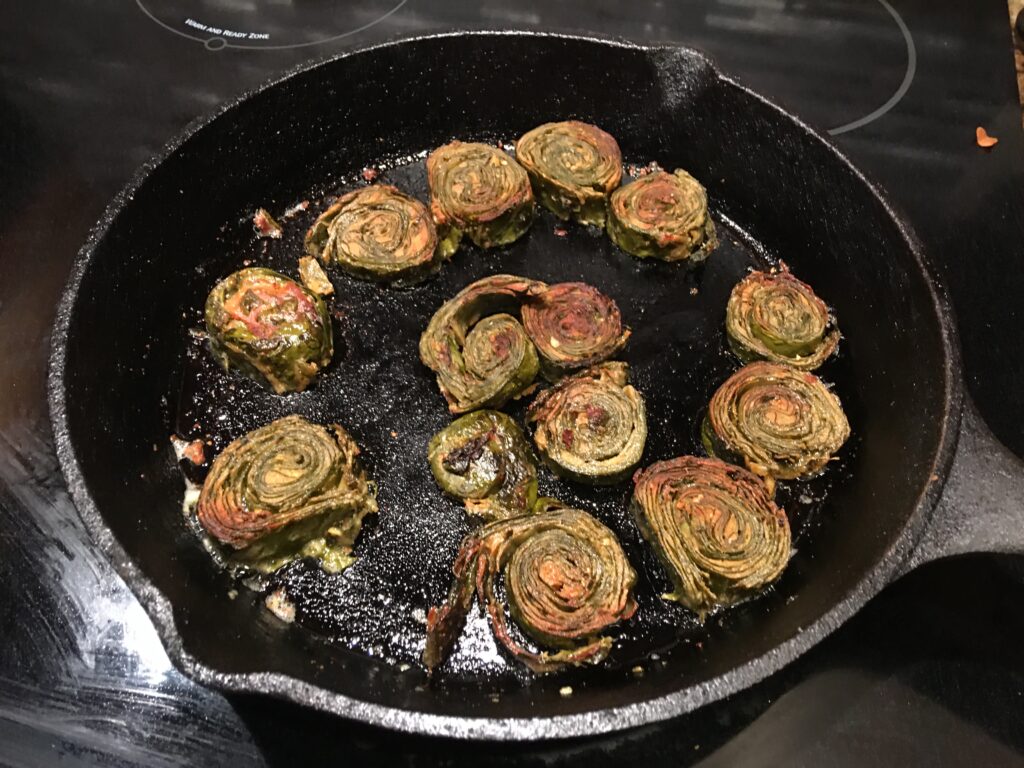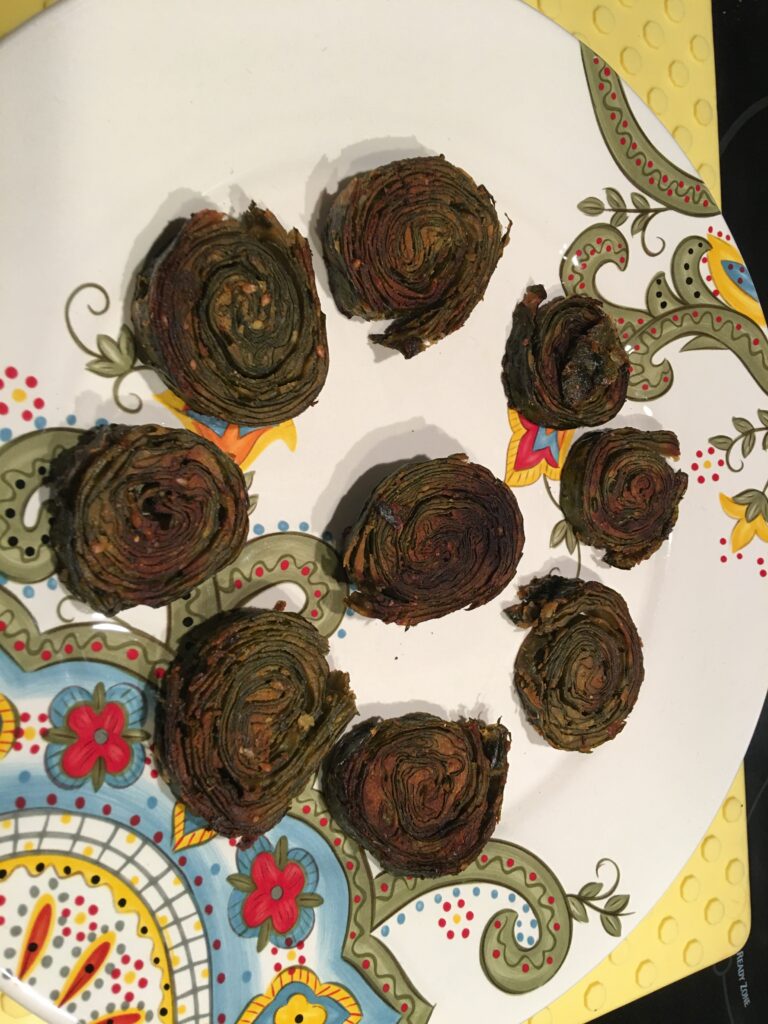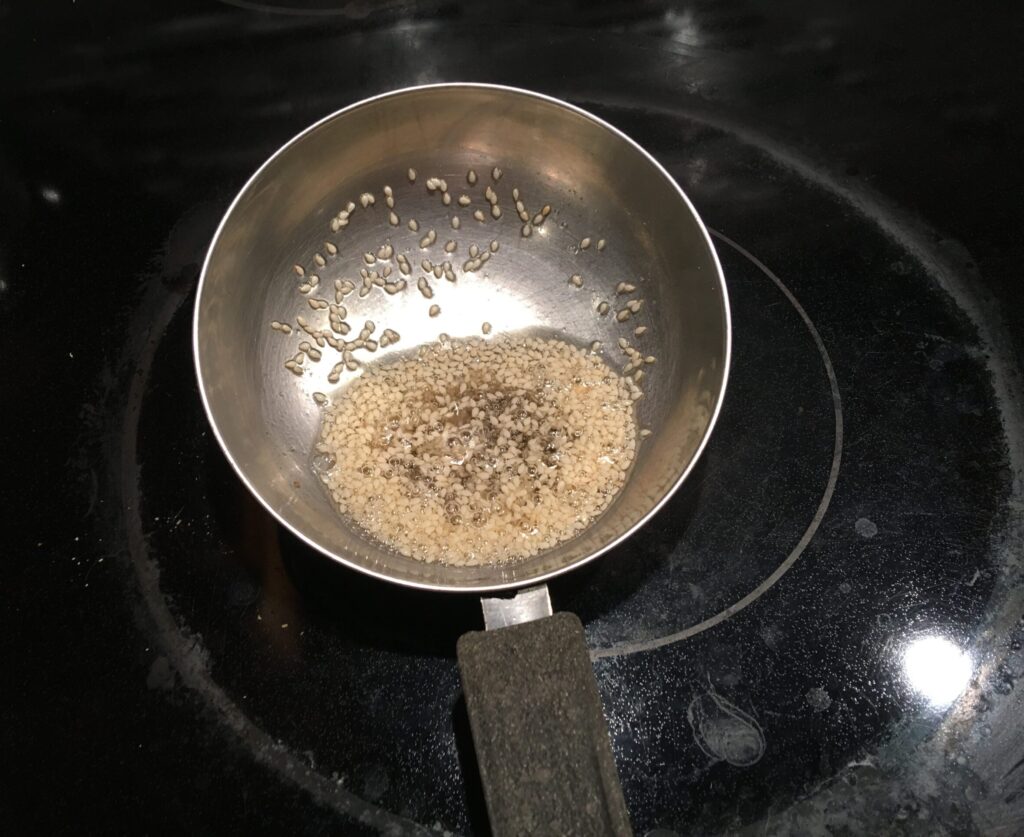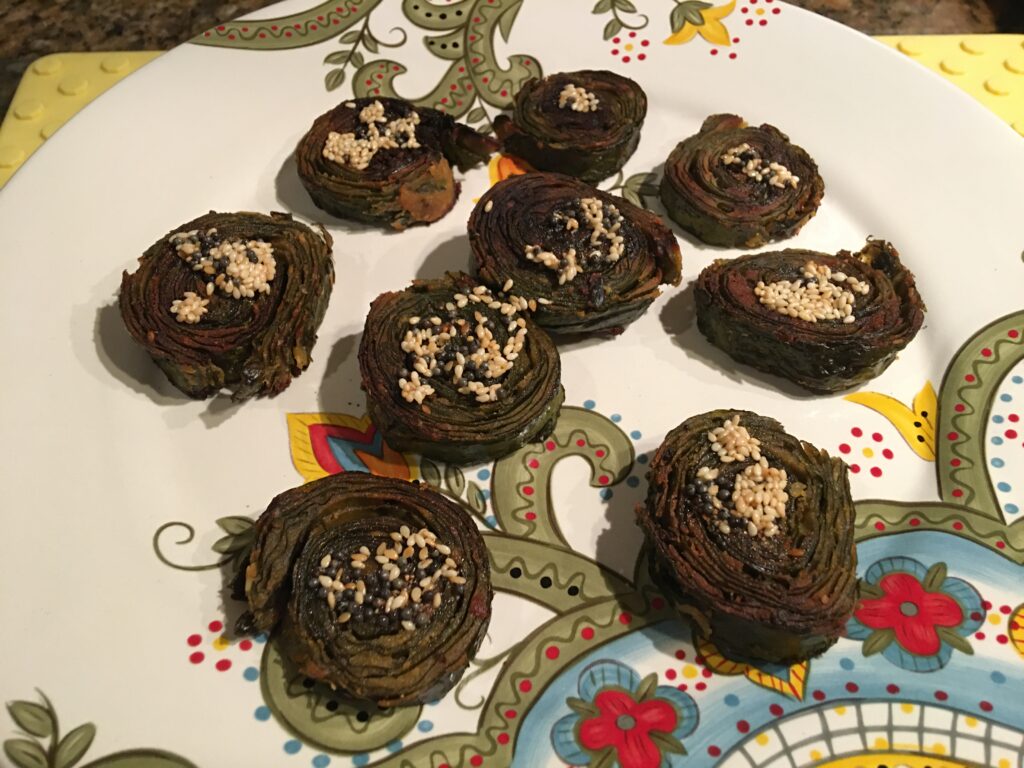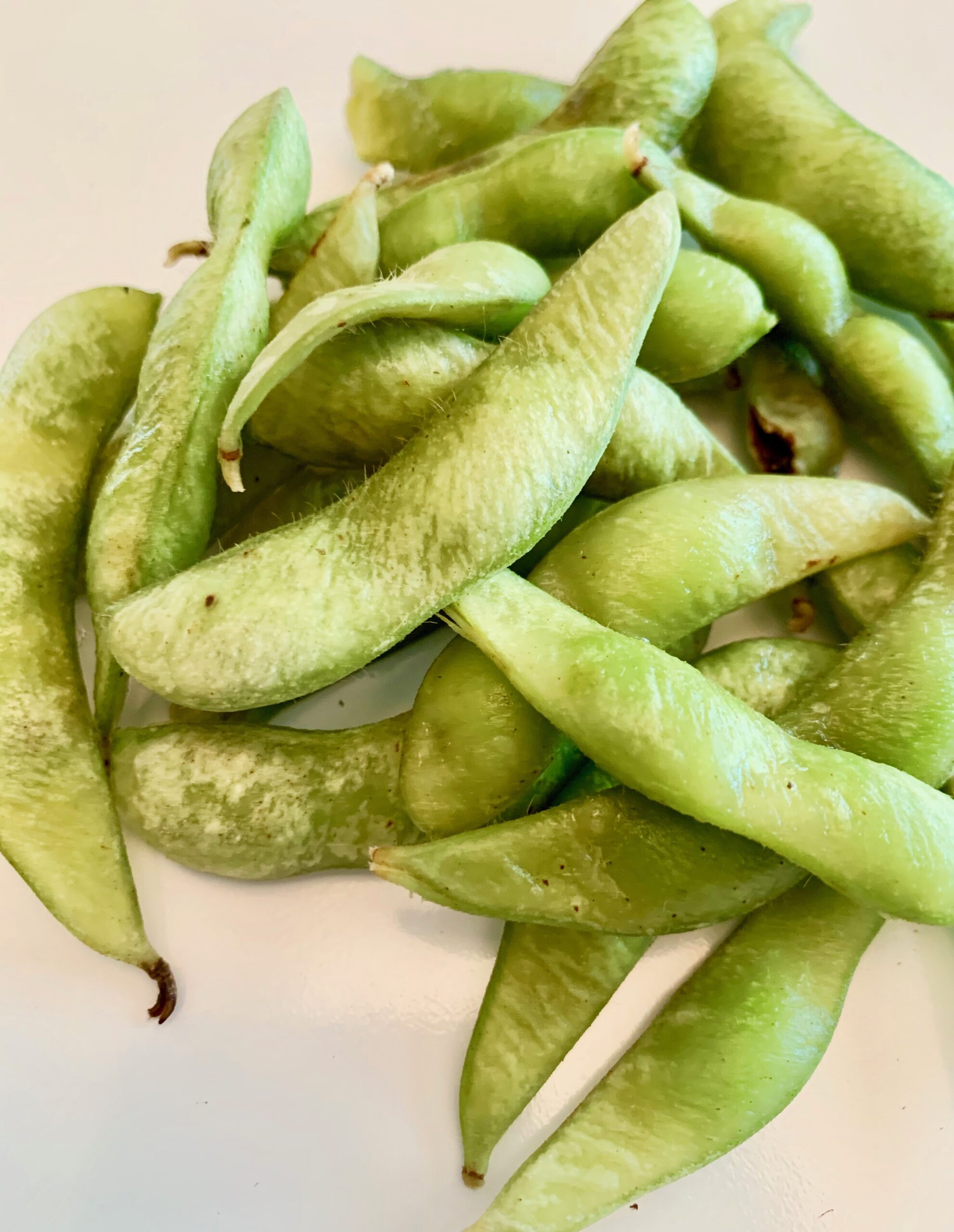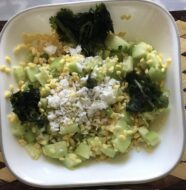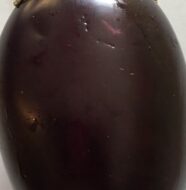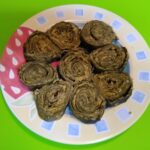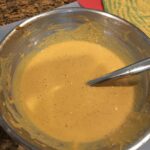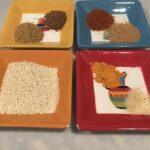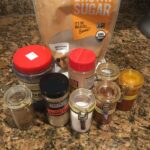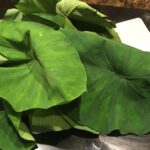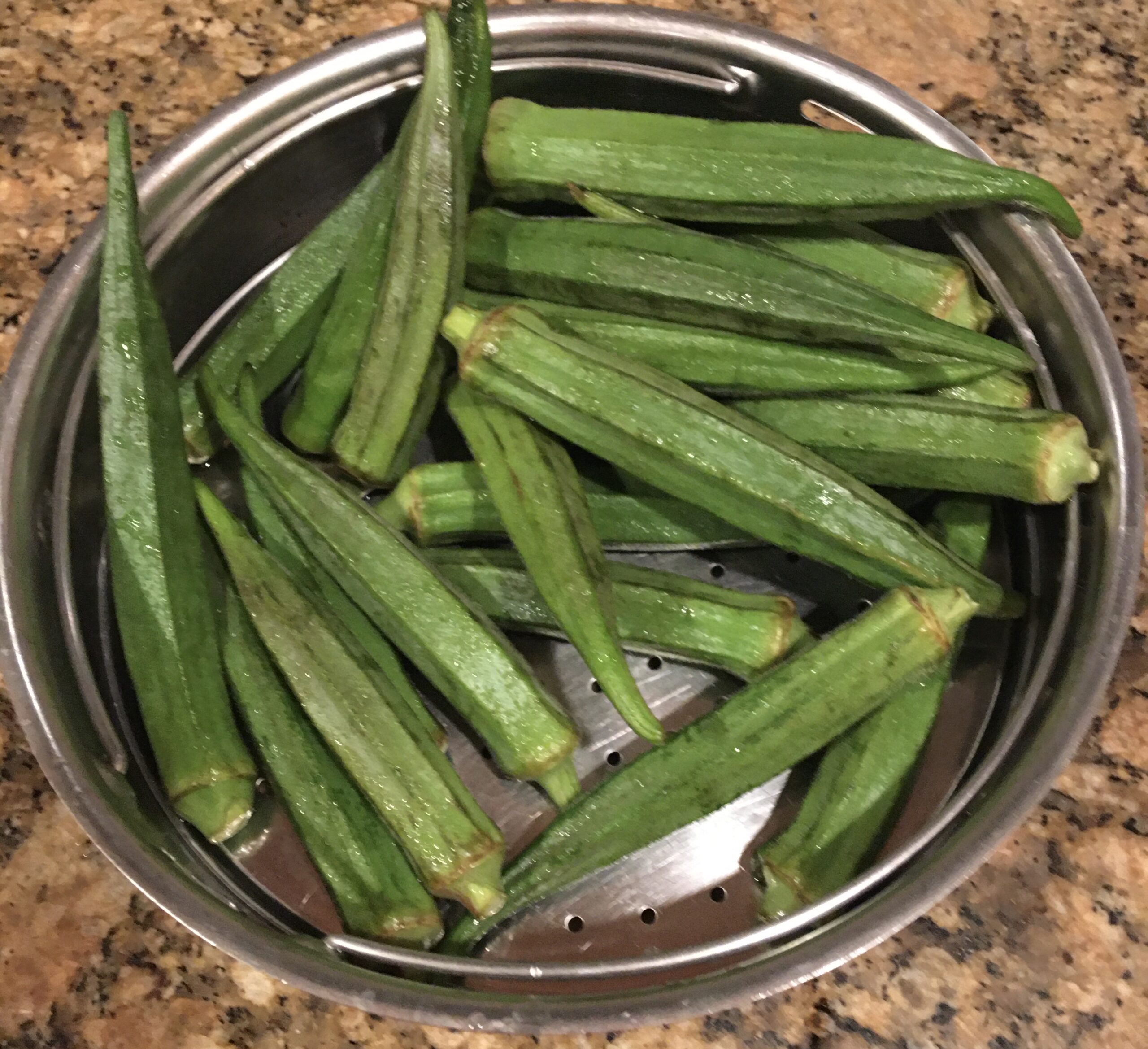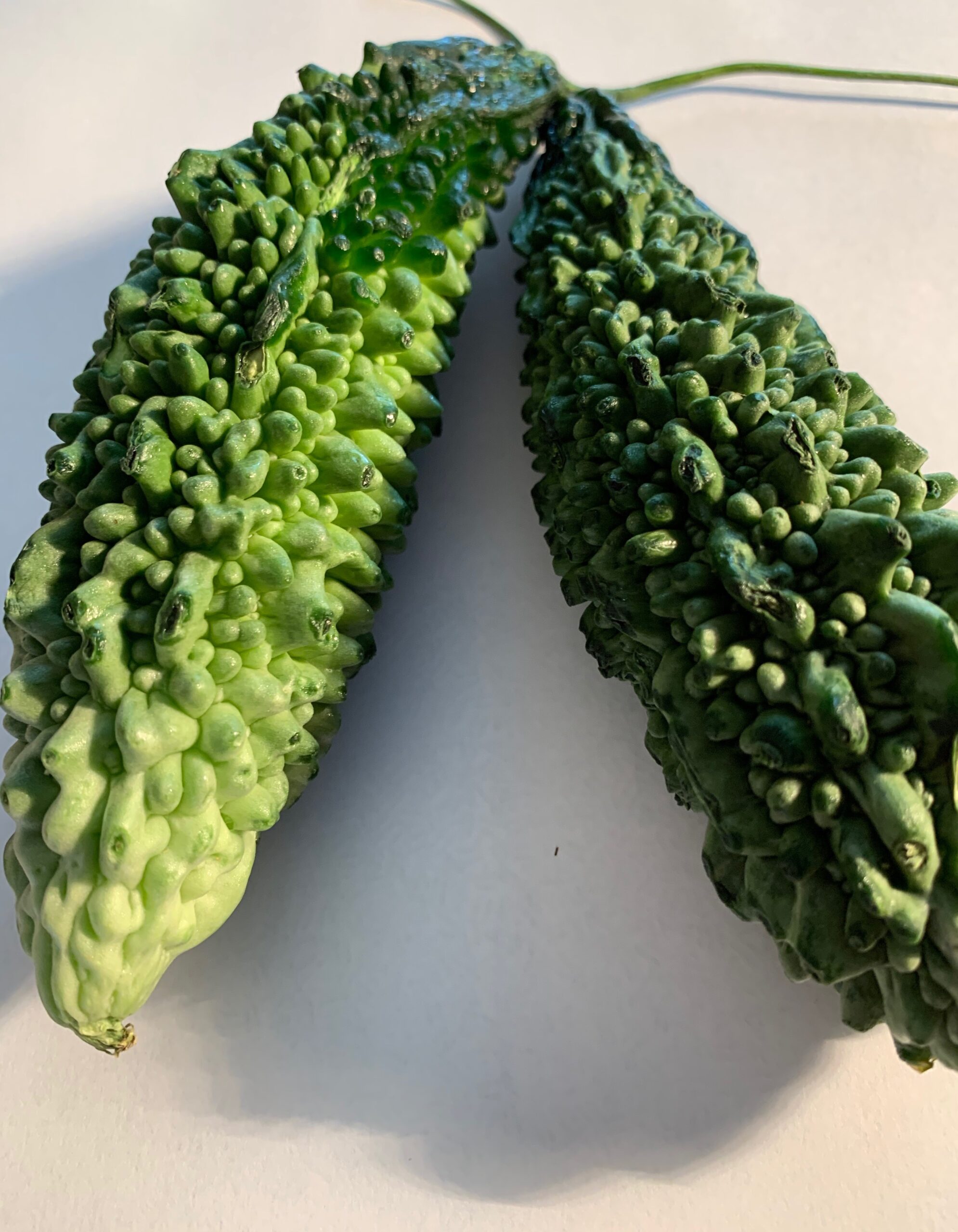Taro leaves, grown from Taro root the ” potato of the tropics”, are packed with nutrients. They are known as “Arbi ke pathe” in India and by other names Kalo / Kachalo in Hawaiian, Dasheen, Cocoyam, Elephant’s ear in SE Asia, Africa & the Caribbean. Colocasia leaves are healthy, being low in saturated fat, cholesterol, and sodium; rich in antioxidants, a good source of Fiber, Folate, Protein, and Vitamins A, C, E, B6, Niacin (B3), Riboflavin (B2), & Thiamin (B1). They also contain minerals Calcium, Copper, Iron, Magnesium, Manganese, Potassium, Phosphorous, Selenium, and Zinc. These are helpful in the functioning and maintenance of the digestive, heart, and immune systems in the body plus preventing diseases like high blood pressure, diabetes, and cancer.
Taro leaves are best suited for steaming, frying, sauteing, and boiling. Gloves should also be worn when
preparing to avoid irritation. Taro leaves make an excellent accompaniment to curries containing coconut milk. They pair well with aromatic spices like ginger, garlic, and onion as well as meats and fish. Filipinos use dried and fresh Taro leaves in a dish called Laing a stew that includes shrimp or crab.
Word of caution: Never eat raw leaves since it can choke due to the presence of tiny needles on the leaf”s underside.
1cup (145g) boiled Taro leaves 34.8 cal, Carb 5.8g, Protein 3.9g, Fat 0.6g
Growing Taro Leaves: It is a perennial herbaceous plant. Both the leaves and tubers of the Taro plant are edible. The leaves are light green purple colored and shaped like elephant ears. The plant grows 3-6 ft. tall. The Taro varieties are grouped by the color of the flesh from pink to yellow to white.The cultivar bunting grows well in sub tropics.Taro grown for its leaves can be grown in temperatures as low as 10C. It grows well in partial shade.
https://www.mykitchengarden.info/2015/08/taro-growing-information.html
Buying and Storing: Taro leaves are available year-round. The leaves are dark green and smooth on the surface and light green on the underside. The underside of the leaves have veins that branch out. Both veins and stems have a purple to red hue and often variegated. When cooked the leaves are tender and have a mild nutty flavor with a slightly metallic iron taste. Taro leaves can be wrapped in paper towels and stored in a plastic bag for 3-4 days in the refrigerator.
History: Taro leaf is native to S.E Asia and it is estimated to be cultivated before 5000 BCE, IT then spread to ancient Egypt and later became an important crop in Greece, Rome, and China. When the Polynesians colonized Samoa they took the Taro plant to Hawai & Newzealand and the Spanish brought it to the Americas. Today Taro leaves can be found in fresh markets across the world across Asia, S.E. Asia, Polynesia, the Caribbean, and Africa.
Ethnic culture: Taro leaves are widely used throughout the Pacific islands and have a special association in Hawai where famous luaus are named after the Taro leaf. The name luau comes from Kalo a word used to describe the Taro plant. The leaves are used to wrap meats and then steamed in the underground imu oven before serving.
https://www.specialtyproduce.com/produce/Taro_Leaves_3409.php
Nutrition Facts of Taro leaves (Colocasia esculenta)(100g)
| GI 15:GL 2 | Minerals | Vitamins |
| Energy 24 cal. – 1% | Calcium 86mg – 9% | Vitamin A 4238IU – 85% |
| Carb 4g – 1 % | Iron 1.2mg – 7% | Vitamin C 35.5 mg – 59% |
| Dietary Fiber 2g – 8% | Magnesium 20mg – 5% | Thiamin 0.1mg – 9% |
| Protein 2.7g – 5% | Phosphorous 27mg – 3% | Riboflavin 0.4mg – 22% |
| Total Fat 0.4g – 1% | Potassium 460mg – 13% | Niacin 1.3mg – 6% |
| Omega 3 Fatty acid 51mg | Sodium 2mg – 0% | Vitamin B6 0.1mg – 4% |
| Omega 6 Fatty acid 117mg | Zinc 0.2mg – 1% | Folate 48mcg – 12% |
| Copper 0.1mg – 7% | Choline 21mg | |
| Manganes 0.4mg – 19% | ||
| Selenium 0.9mcg – 1% |
Taro Leaf Recipes
Taro Leaf Fritters
Taro Leaf Red Lentil Dal
Taro Leaf in Yogurt Sauce
Health Benefits of Taro Leaves
- Acts as an antioxidant to prevent cancer: the leaves are rich in Vitamin C which fights against free radicals that cause cancer.
- Aids in weight loss: low in fat and high in protein which s a great diet choice to reduce fat and gain muscle.
- Boosts immune system: 1 cup taro leaves contains 86% of DV that the body needs which can effectively boost the immune system.
- Promotes healthy eyes: Taro leaves are rich in Vitamin A providing 123% of DV that is good for maintaining visual acuity and prevent eye diseases such as cataracts, myopia, and blindness.
- Helps prevent anemia: contains iron which helps in red blood cell formation.
- Helps control blood pressure:Taro leaves contain omega 3 an essential fatty acid that provides hormone to control the contraction and relaxation of the arteries wall thus helping the body to maintain normal blood pressure.
- Helps the development of the fetal brain and nervous system: Taro leaves contain folates (Folic acid ) essential for the development of the fetal brain and nervous system. N.B. Be sure to cook them well prior to eating.
- Helps increase sperm production: Taro leaves are good for men because of its “Arginine ” content. This amino acid helps increase sperm production.
- Helps reduce wrinkles in the skin: the leaves contain an amino acid called “threonine” a protein compound that helps to form elastin and collagen that prevents skin from wrinkling and rejuvenate it.
- Reduces Cholesterol levels: Taro leaves have no cholesterol and only 1 % total fat. The dietary fiber Methionine present in the leaves can reduce the cholesterol effectively by binding and breaking down fat and Triglycerides.
- https://www.thecoconet.tv/coco-talanoa/health-well-being/health-benefits-of-taro-leaves/
Spice Power
- Tamarind pulp: tamarind (a legume like soy) fights inflammation since it contains polyphenols (antioxidants) that help control inflammation and relieves pain. Antioxidants can protect from heart disease and some types of cancer. Extracts from tamarind seeds help ease arthritis pain.
- Turmeric powder: detoxifies the liver, may prevent and slow the onset of Alzheimer’s; may prevent metastases from occurring in different forms of cancer, may aid in fat metabolism and weight management, help ease arthritis, and rheumatoid arthritis.
- Asafetida powder: helps relieve bloating and other stomach problems, may help relieve asthma, may lower blood pressure.
- Red chili powder: Aids in weight loss, enhances cognitive function; Capsaicin presence helps reduce cholesterol, Triglycerides, and platelet aggregation.
- Cumin seeds: regulates digestion, reduces the risk of diabetes, lowers cholesterol, helps foods cleanse of pathogens, and helps increase bone density thus preventing osteoporosis.
- Sesame seeds (white): has bone-building minerals(copper, calcium, magnesium, manganese), heart-healthy fiber, cholesterol-lowering phytosterols, and good fats.
- Mustard seeds: speeds up metabolism, stimulates and aids digestion, inhibits cancer cell growth, decreases symptoms of rheumatoid arthritis, lowers high blood pressure, soothes sore throats, bronchitis and pneumonia.
Method to cook Taro leaves Fritters
Taro (Colocasia) leaves are like grape leaves and good for stuffing with chickpea flour or ground lentils with spices. The stuffed leaves are steamed and shallow fried before serving. This dish is a delicacy due to the elaborate steps involved in its preparation.
- Mix flour, tamarind, spices, 1tbsp. oil and water to make a smooth paste.
- Wash and wipe Taro leaves; remove the central stem from the back by peeling it off. Spread on a flat surface and smoothen ends. Arrange leaves from big to small in two sets of 5.
- Application of flour paste: Smear flour paste 1/2 ” thick on the biggest Taro leaf; place 2nd leaf with ends facing opposite side; apply the paste again; place 3rd, 4th & 5th leaf and repeat application on top of each (remember to reverse the broad end and the tip of the leaf for each layer). Fold the sides, top, and bottom end; roll tightly (like a mat) into a spiral, and seal. The paste will hold the roll together. Make the second roll in the same manner.
- Repeat the stuffing process with other pairs of leaves. (5 min.)
- Place leaves in a steamer with holes and steam. (15 min.)
- Allow cooling; cut the rolls into 1/2 “ thick spirals.
- Heat the oil in a frying pan, add mustard seeds; wait for them to splutter;
- Add the rolls in batches of five; shallow fry in hot oil until crisp. (6 min.)
An alternate method for filling with lentils:
- Pre-soak 1 cup chickpea lentils in water for 30 min.
- Grind into a smooth paste in a food processor with spices. (2 min.)
- Follow the rolling method as above.
- Tie with a string or use a toothpick to hold them together.
- Place patra rolls in a steamer plate with holes and steam. (8 min.)
- Allow to cool; cut into circles using a serrated Knife
- Heat the oil and shallow fry in hot oil until golden on one side and reverse to fry the other side. ( 6 min.)
For extra flavor do Sizzler:
- Heat 1tsp. oil add mustard and sesame seeds. Allow spluttering.
- Arrange the Patra spirals on a flat plate. spoon a few sizzled seeds on each.
Serve as a snack with ketchup or as a side dish with rice.
TIPS
Quick Patra: Cut slices from frozen /canned & stuffed leaves available in Indian Stores
Warning: TARO LEAVES MUST NEVER BE EATEN RAW; CAUSE THROAT IRRITATION.

